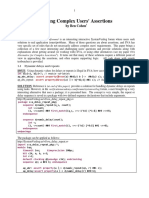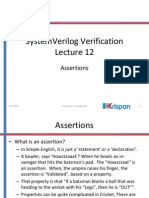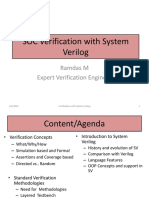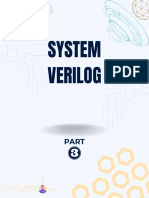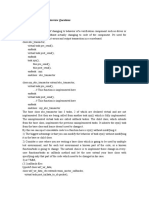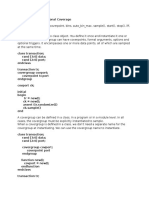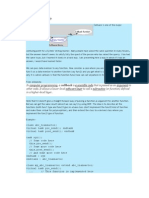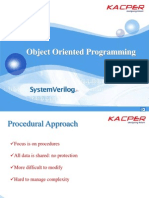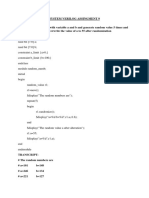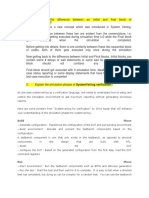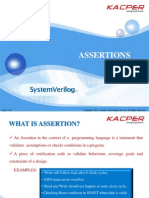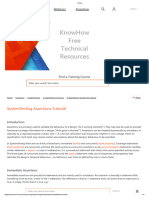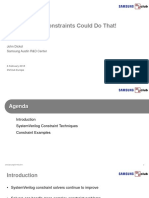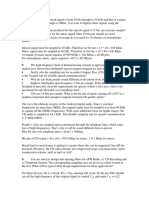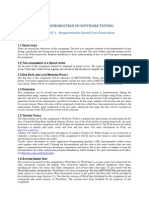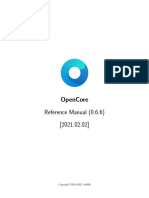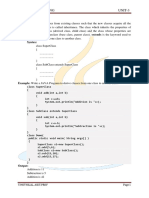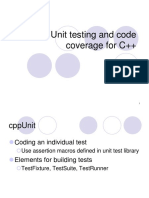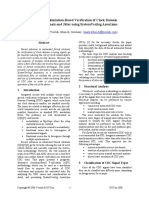100% found this document useful (2 votes)
2K views86 pagesSystem Verilog Assertions
This document discusses assertions and coverage in SystemVerilog. It defines assertions as checks used to verify design requirements and coverage as metrics used to measure how much of a design has been tested. It describes different types of assertions including immediate assertions that check conditions at a single time and concurrent assertions that check sequences of events over multiple clock cycles. It provides examples of using different types of assertions and properties to specify design rules to verify.
Uploaded by
Meghana VeggalamCopyright
© © All Rights Reserved
We take content rights seriously. If you suspect this is your content, claim it here.
Available Formats
Download as PDF, TXT or read online on Scribd
100% found this document useful (2 votes)
2K views86 pagesSystem Verilog Assertions
This document discusses assertions and coverage in SystemVerilog. It defines assertions as checks used to verify design requirements and coverage as metrics used to measure how much of a design has been tested. It describes different types of assertions including immediate assertions that check conditions at a single time and concurrent assertions that check sequences of events over multiple clock cycles. It provides examples of using different types of assertions and properties to specify design rules to verify.
Uploaded by
Meghana VeggalamCopyright
© © All Rights Reserved
We take content rights seriously. If you suspect this is your content, claim it here.
Available Formats
Download as PDF, TXT or read online on Scribd
/ 86

